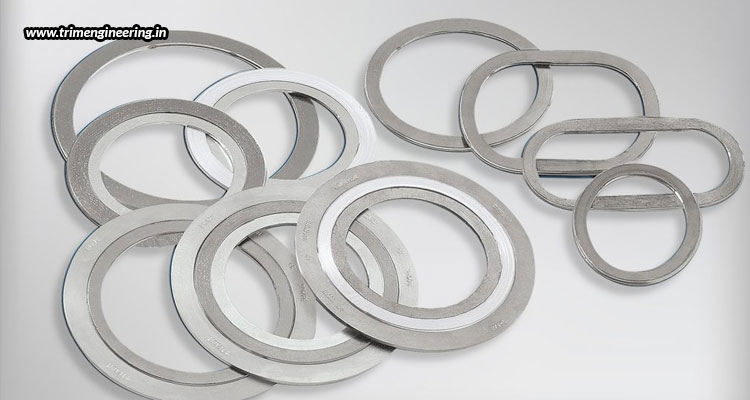What Kinds Of Spiral Wound Gaskets Are Available?
Spiral wound gaskets are those that comprise of a mix of metal and filler material; wherein a metallic ring that is normally carbon rich or stainless steel is wound around a filler material that is probably flexible graphite. Here, the winding sides of the metal and filler material are opposite to each other. This results in alternating layers of metal and filler material. Hence, the filler acts as a sealing element, while the metal provides structural support. These gaskets are generally circular in shape, but are available in other shapes too.
Trim Engineering Services is one of the most reliable spiral wound gasket manufacturers in India providing gaskets that offer utmost strength and resiliency with the metal, while the filler material provides conformability and sealability. The materials used for constructing spiral wound gaskets are selected based upon various factors like operating temperature, corrosive nature, fluid concentration, and material cost. Trim Engineering Services generally uses Carbon Steel or Stainless Steel 304, 316, and 321 for the metallic part; and Graphite or Asbestos for the filler material.
Spiral wound gaskets are designed for the widest range of operating conditions of pressure and temperature. They are used for high temperature and high pressure applications. They are used on raised face, male-and-female, and tongue-and-groove flanges. They have proven to be reliable in most applications, allowing lower clamping forces than solid gaskets, although at a higher cost.
Now, let us learn about the various types of spiral wound gaskets available.
Style CG
These gaskets utilize an external ring that accurately centers the gasket on flange face, and provides additional radial strength that acts as a compression stop, and prevents gasket blowout. They are suitable for use with flat face and raised face flanges.
Style CGI
These are CG style gaskets fitted with an internal ring that gives additional compression limiting stop, and provides a barrier to heat and corrosion; thus protecting the windings of the gasket and preventing flange erosion. In flat and raised face flanges, these gaskets feature increased compressive force for blow-out prevention. They are used in high pressure and high temperature applications, and where corrosive or toxic media are present.
Style HE
These are gaskets used for heat exchangers where pass bars are required. The outer ring is similar to a standard spiral wound construction, while the rib portion is single or double jacketed, securely fastened to the ID of the spiral wound portion. These gaskets are most commonly specified for shell and tube heat exchangers with TEMA flange.
Style HE-CG
Identical to Style HE gaskets, the exception is that it has an outer ring on the OD, which acts as a centering guide and provides additional radial strength to prevent gasket blow-out, and also acts as a compression stop.
Style R
Here, the inner and outer diameters are reinforced with several metal plies without filler material, to give greater stability, better sealing, and better compression. Working as a sealing element only, these gaskets are most suitable for male-and-female, tongue-and-groove, and grooved-to-flat flange assemblies.
Style RIR
These gaskets have a solid inner metal ring that acts as compression stop and fills the annular space between flange bore and inside diameter. They are designed to reduce turbulent flow of fluids, prevent accumulation of solids, and minimize erosion of flange faces. Just like Style R gaskets, these gaskets also have inner and outer diameters reinforced with metal plies without filler material.
Style HX-RIR
These are Style RIR gaskets that are developed for use on heat exchanger TEMA type flange arrangements. Along with an inner ring, the standard construction supports an outer wound steel nose, designer for accurate gasket location.
Carrier ring
These gaskets consist of two spiral wound gasket seals dug into each face of a metallic core. They have high recovery characteristics and increased strength and handlability, as compared to standard configuration gaskets. These gaskets are used in high pressure and high temperature applications, and on flat-faced, raised-face, and tongue-and-groove type flanges.


